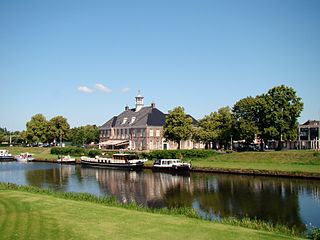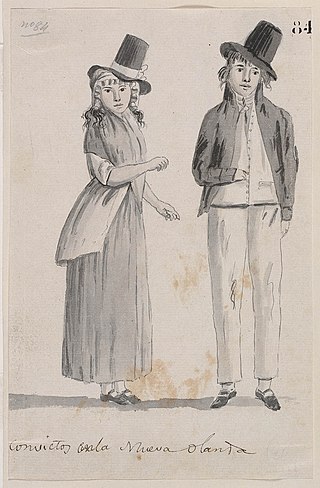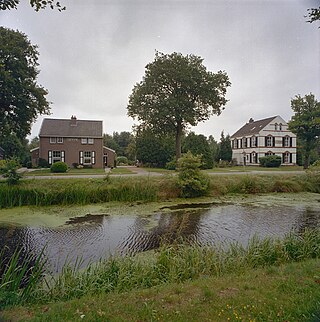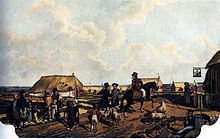
The Dutch West India Company was a Dutch chartered company founded in 1621 and went defunct in 1792. Among its founders were Reynier Pauw, Willem Usselincx (1567–1647), and Jessé de Forest (1576–1624). On 3 June 1621, it was granted a charter for a trade monopoly in the Dutch West Indies by the Republic of the Seven United Netherlands and given jurisdiction over Dutch participation in the Atlantic slave trade, Brazil, the Caribbean, and North America.

Assen is a city and municipality in the Northeastern Netherlands, and is the capital of the province of Drenthe. It received city rights in 1809. Assen is known for TT Circuit Assen, the motorcycle racing circuit, where on the last Sunday in June the Dutch TT is run; and also for the annual Assen Dance Festival.

Coevorden is a city and municipality in the province of Drenthe, in the east of the Netherlands. During the 1998 municipal reorganisation in the province, Coevorden merged with Dalen, Sleen, Oosterhesselen and Zweeloo, retaining its name. In August 2017, it had a population of 35,267.

Ommen is a municipality and a Hanseatic city in the eastern Netherlands. It is located in the Vecht valley of the Salland region in Overijssel. Historical records first name Ommen in the early 12th century and it was officially founded as a city in 1248. The municipality had a population of 18,295 in 2021 and covers an area of 182.01 km2 (70.27 sq mi).

Dutch Americans are Americans of Dutch and Flemish descent whose ancestors came from the Low Countries in the distant past, or from the Netherlands as from 1830 when the Flemish became independent from the United Kingdom of the Netherlands by creating the Kingdom of Belgium. Dutch settlement in the Americas started in 1613 with New Amsterdam, which was exchanged with the English for Suriname at the Treaty of Breda (1667) and renamed New York City. The English split the Dutch colony of New Netherland into two pieces and named them New York and New Jersey. Further waves of immigration occurred in the 19th and 20th centuries.

The Cultivation System was a Dutch government policy from 1830–1870 for its Dutch East Indies colony. Requiring a portion of agricultural production to be devoted to export crops, it is referred to by Indonesian historians as tanam paksa.

Between 1788 and 1868 the British penal system transported about 162,000 convicts from Great Britain and Ireland to various penal colonies in Australia.

Johannes, Count van den Bosch was a Dutch officer and politician. He was Governor-General of the Dutch East Indies (1830–1833), commander of the Royal Netherlands East Indies Army, Minister of Colonies, and Minister of State. He was an officer in the Military William Order.

Zorgvlied is a village in the Dutch province of Drenthe. It is a part of the municipality of Westerveld, and lies about 23 km west of Assen.

Frederiksoord is a village in the Dutch province of Drenthe. It is a part of the municipality of Westerveld, and lies about 24 km northwest of Hoogeveen.

Wilhelminaoord is a village in the Dutch province of Drenthe. It is a part of the municipality of Westerveld, and lies about 26 km northwest of Hoogeveen.

The Wereldmuseum Amsterdam is an ethnographic museum with its headquarters in Amsterdam, Netherlands. It was originally founded in Haarlem, Netherlands in 1864 under the name Koloniaal Museum and later renamed Tropenmuseum.

Boschoord is a hamlet in the north-eastern Netherlands. It is located in the municipality of Westerveld, Drenthe.

Veenhuizen is a village with around 800 inhabitants in the province of Drenthe in the Netherlands. In the early 19th century, a reform housing colony for the poor and homeless was established in Veenhuizen by the Society of Benevolence. In the late 19th century, the complex was turned into a penal colony. The village became freely accessible in 1984 and has been part of the municipality of Noordenveld since 1998. The National Prison Museum is located here. Along with other colonies established by the Society of Benevolence, Veenhuizen was inscribed on the UNESCO World Heritage List in 2021, for its testimony to a unique method of housing reform and its urban planning

Albertus Henricus Wiese (1761–1810) was Governor-General of the Dutch East Indies from 1805 to 1808, during which time the United Provinces became, during the French Revolutionary and Napoleonic Wars, first the Batavian Republic and then the Kingdom of Holland. Dutch possessions in the Indies were under pressure from other European powers, particularly Great Britain, while local kings and princes took the opportunity of troubled times to reassert themselves. Weakness of control from the homeland led to a growth of corruption, nepotism and lawlessness in the Dutch East Indies.
Marijenkampen is a hamlet in Steenwijkerland, a municipality in the province Overijssel in the Netherlands. Until 1867, the area was called Huttenberg and was overgrown with heath. The first inhabitants were people who had been banned from the neighbouring colony Willemsoord, founded by the Society of Humanitarianism. These inhabitants settled in and led an independent life. The village was named after Marij van Essen who owned several lots of land in the area.
Hendrikus Jacobus Tonneboeijer was a Dutch colonial officer, who made a career in the administration on the Dutch Gold Coast. He was Acting Commander of the Dutch Gold Coast in 1836 and 1837.
Van den Bosch is a Dutch toponymic surname, originally indicating either an association with a forest, with a place/dwelling named "Den Bosch" or with the city Den Bosch. In the Netherlands about 10,200 carried the name in 2007, while in Belgium 3,755 people were named Van Den Bosch and another 3,164 were named Vandenbosch, Vandebosch or Vanden Bosch in 2008. Other variant spellings are Van der Bosch and Van den Bos.

Wortel is a village in the Belgian municipality of Hoogstraten. As of 2021, it has 1,844 inhabitants.

















